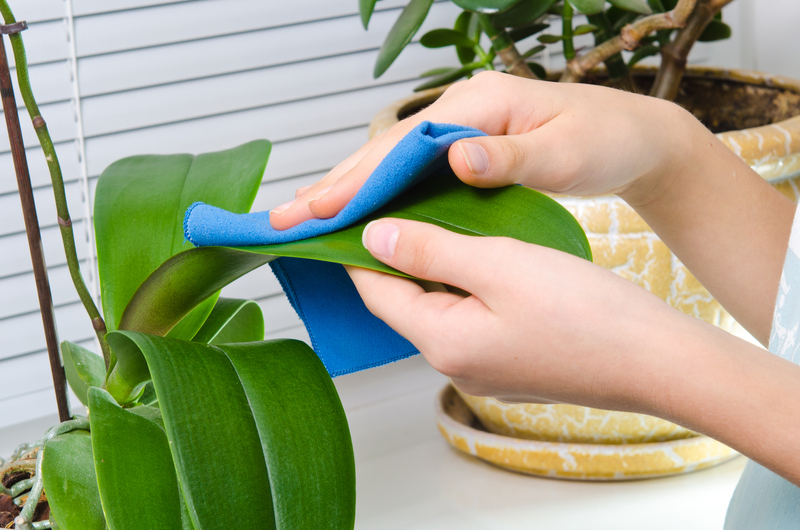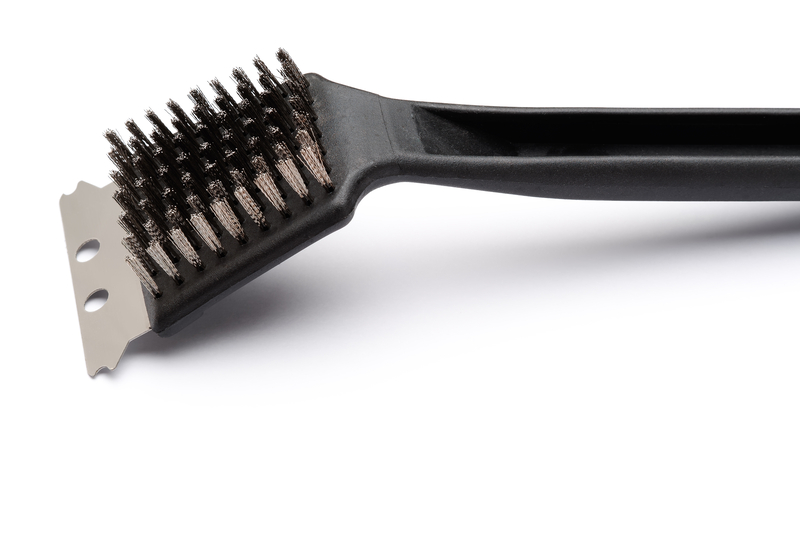Optimize Your Curtain Cleaning Routine
Posted on 22/05/2025
Optimize Your Curtain Cleaning Routine: A Comprehensive Guide
Curtains lend privacy, style, and comfort to any room. Over time, however, they accumulate dust, pet hair, odors, and even allergens, diminishing not just their beauty but also the air quality of your living space. To ensure a healthy, inviting home, it's essential to optimize your curtain cleaning routine. This guide will walk you through effective methods, schedules, and pro tips to help you keep your drapes looking their very best.

Why Prioritize Curtain Cleaning?
- Improved indoor air quality: Dust and allergens collected on curtains can impact respiratory health.
- Longer curtain lifespan: Regular maintenance prevents fabric deterioration and fading.
- Enhanced aesthetic appeal: Clean curtains uplift the room's look.
- Odor removal: Curtains can trap smells from pets, cooking, or smoke.
- Allergen control: Essential for homes with allergy sufferers.
Understanding why clean curtains matter will motivate you to establish--and maintain--a routine that truly works.
Understanding Your Curtains: Fabric and Care Labels
Before you dive into any cleaning method, knowing what your curtains are made of is critical. Most fabrics, from luxurious silk to sturdy cotton or synthetic blends, have their own special care requirements. Always check the care label for guidelines on water temperature, machine washability, and compatible detergents.
- Synthetics and cotton: Usually machine-washable but check for shrinkage risks.
- Linen: Requires gentle cycles and air drying to prevent wrinkles or warping.
- Velvet and silk: Often need dry cleaning or specialized hand washing.
Pro tip:
Test a small section for colorfastness before embarking on a full wash. This precaution prevents dye runs or fading issues, ensuring your curtain cleaning routine doesn't result in irreparable damage.
Frequency: How Often Should You Clean Curtains?
How often you undertake curtain cleaning depends on your environment:
- High-traffic areas or homes with pets: Every 3-4 months
- Allergy-prone households: Every 2-3 months
- Standard environments: Every 6 months is usually sufficient
- Valances and sheers: Typically require less frequent cleaning (1-2 times per year)
Of course, weekly dusting or vacuuming is strongly advised to minimize buildup and keep the cleaning process simpler in the long run.
Best Practices: Step-by-Step Optimized Curtain Cleaning Routine
Step 1: Remove Dust Weekly
Regular dusting is your first line of defense. Here's how to do it effectively:
- Use your vacuum cleaner's brush attachment to gently run over hanging curtains from top to bottom.
- For delicate or embroidered fabrics, try a lint roller or a microfibre cloth.
- If possible, shake curtains out outdoors to release embedded particles.
Step 2: Address Spot Stains Immediately
Spot cleaning is essential for optimal maintenance. Dab (don't rub) the affected area with a mild detergent diluted in water. For stubborn stains, consult the care label or consider a professional cleaning service to avoid damage.
Step 3: Deep Clean by Washing
Depending on your curtain fabric and label recommendations:
- Machine-washable curtains: Remove hooks, fasteners, and hardware. Use a gentle cycle with cold water and mild detergent.
- Handwashing: Fill a bathtub with cold or lukewarm water and a gentle detergent. Let the curtains soak, agitate lightly, then rinse thoroughly.
- Dry cleaning: For delicate or lined curtains--don't risk home laundering.
Step 4: Drying the Right Way
After cleaning, hang your curtains to air-dry, preferably outdoors (out of direct sunlight to prevent fading). Avoid tumble drying unless explicitly allowed. If wrinkles appear, use a steamer or a low-temperature iron to refresh the fabric.
Step 5: Rehanging and Finishing Touches
Once dry, reattach hooks and hardware. Smooth out any remaining creases with a hand steamer--this also kills any lingering bacteria or dust mites, giving extra freshness to your newly clean curtains.
Advanced Curtain Cleaning Techniques
Steam Cleaning
For a deep yet gentle clean, especially on heavy draperies or hard-to-remove pieces, use a handheld garment steamer. The hot steam sanitizes fabric, loosens stains, and removes dust mites without wetting the fabric excessively. Just remember to keep the steamer moving to avoid damp patches.
Professional Curtain Cleaning Services
Some fabrics--such as interlined, silk, or vintage curtains--benefit greatly from professional attention. Professionally cleaned curtains not only get expert stain and dirt removal but often also receive pressing and deodorizing treatments. If lacking a suitable machine or facing delicate materials, turn to professionals to safeguard your investment.
Integrating Curtain Cleaning Into Your Household Schedule
- Set calendar reminders for quarterly or biannual deep cleans.
- Use daylight savings changes as a prompt for washing curtains along with bedding and seasonal chores.
- Assign window and curtain care as a rotating household task to ease the load on any one person.
Integration into daily and seasonal routines ensures your curtain care routine becomes a sustainable and effortless part of your household management.
Common Curtain Cleaning Mistakes to Avoid
- Skipping the care label: Always read it to prevent shrinkage, color loss, or ruined fabrics.
- Using harsh chemicals: Stick to gentle, fragrance-free products unless otherwise specified.
- Overloading the washing machine: Crowded washes fail to clean and increase wrinkles.
- Neglecting hardware: Clean curtain rods and tiebacks--they gather as much dust as the fabric itself.
- Leaving curtains damp for too long: This encourages mold and musty odors.
Eco-Friendly and Allergen-Reducing Curtain Cleaning Tips
- Natural detergents: Opt for plant-based or fragrance-free products for sensitive environments.
- Sunshine: Whenever possible, let curtains air out outdoors; sunlight is a natural disinfectant (but avoid prolonged direct exposure to prevent fabric fading).
- Layered window treatments: Use blinds with sheer curtains to reduce dust exposure and cleaning frequency.
Organize and Store Seasonally Used Curtains Properly
If you rotate curtains seasonally, it's important to clean and store them correctly:
- Only store curtains once fully clean and dry to prevent mildew.
- Fold gently and wrap in acid-free paper or breathable cotton bags--never plastic.
- Label by room or season for seamless future installation.
Proper storage helps maintain fabric freshness and streamlines your optimized curtain cleaning process year-round.
Maintaining Freshness Between Deep Cleans
Keep your curtains smelling and looking fresh with these interim actions:
- Mist with a light homemade fabric refresher (water + a few drops of essential oil).
- Vacuum often, focusing on pleats and folds.
- Open windows for ventilation on non-pollinated days to remove stale odors.
Top Curtain Cleaning Products & Tools
- Vacuum cleaner with upholstery attachment: Essential for regular dust removal.
- Gentle fabric detergent: For hand and machine washing.
- Handheld garment steamer: Removes wrinkles and refreshes fabric efficiently.
- Lint roller: Quick pick-up of pet hair and lint, especially for sheers and lightweight material.

FAQs on Optimizing Your Curtain Cleaning Routine
1. Is it safe to put all curtains in a washing machine?
Not all curtains are machine-washable. Check manufacturer instructions. Silk, wool, or heavily embellished curtains should generally be hand-washed or dry-cleaned.
2. Can I prevent curtain shrinkage?
Use cold water, a gentle cycle, and air drying. Avoid high-heat drying and verify care labels to reduce the risk.
3. How should I clean blackout or thermal curtains?
Always dust or vacuum first. If washing is allowed, do so gently and avoid heat during drying. If unsure, consult a professional to protect the specialized backing.
Conclusion: A Cleaner, Healthier Household Starts With Smarter Curtain Care
By making small changes to your curtain cleaning habits, you can enjoy fresher air, brighter rooms, and fabrics that look beautiful year after year. Remember, an optimized curtain cleaning routine means not just less work, but significantly improved results. Assess your home's needs, establish a schedule, use the right techniques, and your curtains will reward you with lasting elegance and comfort.
Ready to transform your home's ambiance? Start optimizing your curtain care routine today!





